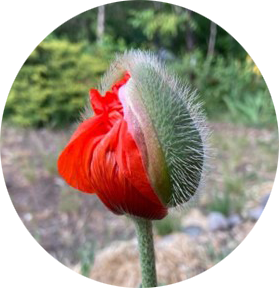The forest is speaking; do you allow yourself to listen? The plants hold deep medicine; they carry ancient songs, and they hold the information we need to carry on in a good way for the generations forward. When we choose to remember how to listen, they speak. When we quiet our minds and open our hearts, we hear.
As far back as human history extends on Earth, people have been connecting and listening to nature. Our ancestors didn’t have encyclopedias or google. They used their intuition and their abilities to communicate with plants to decipher the plant remedies needed to heal their families and promote a long and healthy life. Essentially, they did it for survival. Because they saw life as a web, as an interconnected circuit of patterns and energy taking form, they were able to witness predominant energies in particular plants. For example, it is probably obvious that the aloe plant contains a high degree of the water element. It is no surprise that aloe grows in deserts, where people would need more mucilaginous, watery plants in order to bring balance to their bodies in extreme heat. In general terms, this system is quite simple, and, on the theme of survival, it appears it is time to re-establish this system into today’s society.
This way of looking at the world works as an energetic blueprint for looking at all of life. As we begin to see through a lens of patterns, elements, and interconnection, we begin to deepen our ability to communicate with the world of plants, as well as animals and all forms of life. Through heart-centered awareness, we become whole.
The wonder, depth, and the beauty in what the plants have to share have deeply shaped my way of walking in the world. My intention is to share practices that will deepen your ability to listen to plants, share what certain plant species have taught me, and inspire and encourage humanity as we more intricately weave our human web back into altruistic service to the greater whole.
Everything around us is filled with life force, waiting to be honored, absorbed, and shared. When we work with plants, we are not only working with the chemical composition of their essential oils but also with their spirit. The more we come to understand a plant’s spirit, the more we understand their medicine and how they wish to be processed and worked with. Every plant holds medicine, and it is our responsibility to listen and pass on the, once widely understood, practices of the plant world. Welcome to this budding path, an endless journey of awakening to the universal ear of spirit.
The Weeping Willow (Salix babylonica) had been coming to me for some time; in dreams, in waking consciousness, during meditation, she’s been present. It is no surprise, for it is the season of Willow, Spring…a time of new beginnings, fluidity, and grace.
I began caretaking a land space a few weeks ago and, low and behold, two willow trees were the only trees in the space and both had fallen down this past winter, representing a completely new cycle. The two trees have baby shoots popping up that will eventually be the new willow trees. However, the old trunk and weeping branches had to be removed.
I decided to harvest the new growth on the fallen trees to create a rooting growth hormone for plants. (The instructions on how to do this are at the end of the article.)
As I was preparing the brew in silence in my living room, I listened for the messages Willow wished to share. She spoke about balance. She spoke about remaining in the middle, slightly under the current. As I held her branches, she explained to me that she is able to dig so deeply into the earth and reach so high into the sky because she has mastered balance… the middle path. This wisdom seems more important every day. I witness the world that we are living in and see a deep need to slow down and come into our center, through focused breath or a walk in the woods. It is important that we give ourselves the time to just be. We are called “human beings” not “human doings,” after all. It seems imperative during these times to give ourselves the tool kits we need to brave the storms and remain at ease. The plants are here to assist us in this, and for that, I am endlessly grateful.
“I am a willow of the wilderness,
Loving the wind that bent me.”
Ralph Waldo Emerson
Being able to brave the storm also has much to do with being flexible, another attribute of Grandmother Willow. It was as though her first transmission was telling me to find my own center, to know my own truth, and to move forward in that with flexibility, to connect with the power of wisdom, and the rhythm of my own soul. She allows us to return to the world strengthened, clear, and flowing.
She is also here in service to other’s growth. The Salicin in her branches offers nutrients for plants to grow strong as well as medicine for headaches; salicin is the chemical derived from plants to create aspirin. The use of willow bark dates back thousands of years to the time of Hippocrates (400 BC) when patients were advised to chew on the bark to reduce fever and inflammation.
As I asked in the beginning… the forest is calling, can you hear her? If you are reading this article, my guess is you can. The time of yearning for roots, to connect, and to tune-in to the Earth’s guidance has arrived. Here is a guided format of coming to know the landscape, the nature spirits, and the shamanic side of yourself.
5 Senses Meditation: To Connect With Spirit, Land, and Plants
- Sit in a comfortable position outside. Begin focusing on your breath. Gently gaze forward and take in the patterns, the shadows. See your body, your knees, your hands, with no judgement. Simply absorb your surroundings. Take it in, and let it go.
- Now focus on what you hear, your breath, the breeze, the rustle, your heartbeat, listen.
- With your skin, feel your body; what touches your skin? Absorb the air through your skin. Feel gravity supporting you, gently rising to meet your body. Your body will translate all that surrounds you… just breathe. Feel comfortable to close your eyes. When you breathe, the air becomes a part of you. It enters the bloodstream, pulsing through the heart, appendages, and brain. You are becoming one with everything.
- Continue to listen to the sounds of nature around you. Feel the embrace of Mother Earth. Know that you are loved and trusted in this work and that like all things, it takes time.
- Call upon the plant you are working with today. Ask that it show itself. Express that you are here to listen, to learn, and to share. Sit, observe, feel. Do not invite the mind to perform any action. Simply breathe and observe.
The intention of the 5 Senses Meditation is to connect oneself with the larger whole, to connect with the elements, forces, and medicines that surround us on this planet every day. There is no wrong way to meditate. Some days, I can sink in easily—other days, not so much. Either way, taking time to quiet the mind will aid you immensely in this work.
Procedure For Making Willow Rooting Growth Hormone Water:
- Ask for permission and collect young, first-year, twigs and stems of the Willow. These have green or yellow bark. Don’t use the older growth that has turned brown or gray.
- Remove all the leaves; these are not used. Don’t waste good green material though, compost the leaves or throw them in the garden as mulch.
- Take the twigs and cut them up into 1″long pieces and place them in a pot.
- Process in water using one of two options:
- Place the chopped willow twigs in a container and cover with boiling water, just like making tea, and allow the “tea” to stand overnight.
- Place the chopped willow twigs in a container and cover with tap water (unheated), and let it soak for several days.
- When finished, separate the liquid from the twigs by carefully pouring out the liquid, or pouring it through a strainer. The liquid is now ready to use for rooting cuttings. You can keep the liquid for up to two months if you put it in a jar with a tight-fitting lid and keep the liquid in the refrigerator. Remember to label the jar so you remember what it is, and write down the date you brewed it up, and to aid the memory, write down the date that it should be used by, which is two months from the date it was made!
- To use, just pour some willow water into a small jar, and place the cuttings in there like flowers in a vase, and leave them there to soak overnight for several hours so that they take up the plant rooting hormone. Then prepare them as you would when propagating any other cuttings.
The second way to use willow water is to use it to water the propagating medium in which you have placed cuttings. Watering your cuttings twice with willow water should be enough to help them root.

